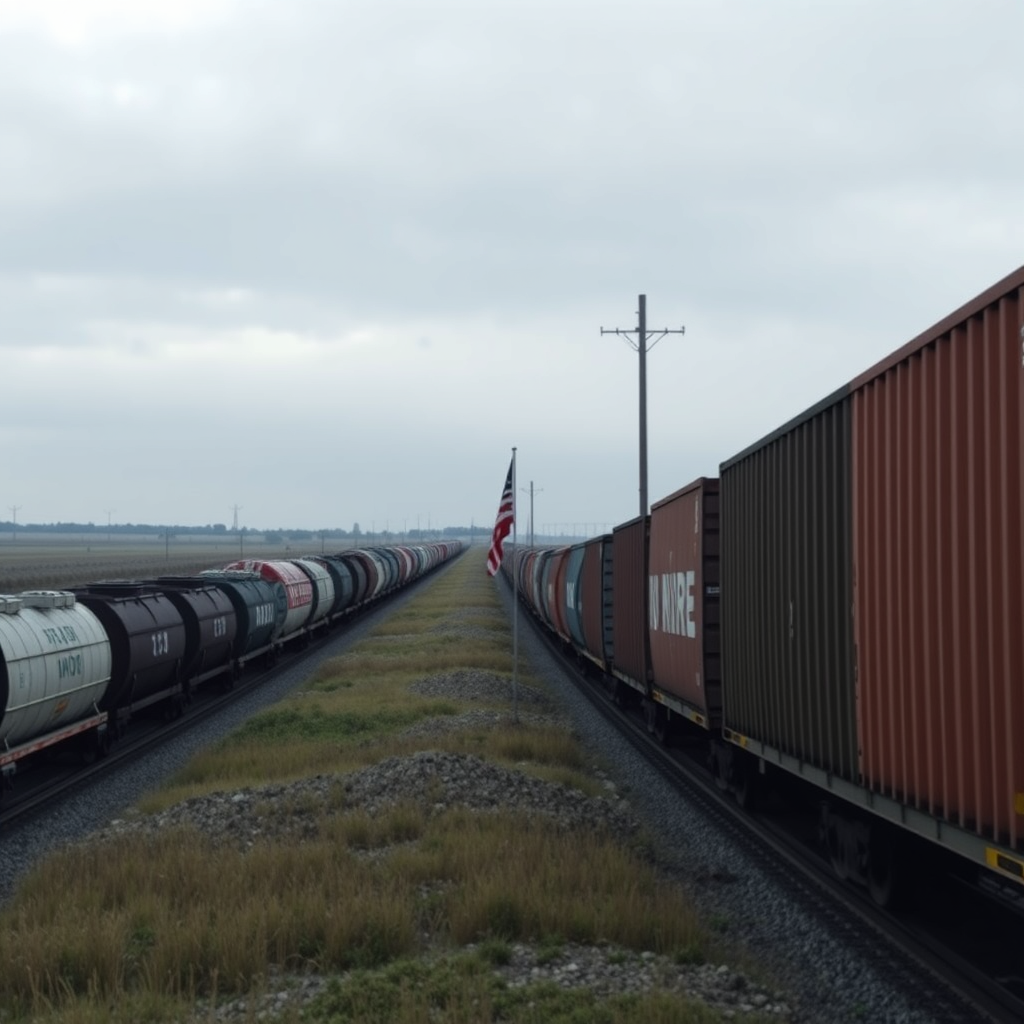Green Rail Revolution: DB Cargo’s HVO Locomotive

Introduction
The railway industry is under increasing pressure to reduce its environmental impact. Traditional diesel locomotives contribute significantly to greenhouse gas emissions, prompting a global search for sustainable alternatives. This article explores the innovative approach taken by DB Cargo, a leading German freight railway operator, in deploying a Hydrotreated Vegetable Oil (HVO)-fueled locomotive for transporting vehicles between the UK and continental Europe. This initiative represents a significant step towards decarbonizing freight transport and highlights the potential of biofuels as a bridging technology in the transition to fully electric rail systems. We will examine the technological aspects of HVO fuel, the operational implications of its use, the environmental benefits, and the broader context of sustainable practices within the rail industry. The discussion will also consider the economic implications and the role of government support in fostering the adoption of greener technologies within the rail sector. The future of sustainable rail transport relies heavily on such innovative solutions and government policies encouraging their implementation.
HVO Fuel and Locomotive Technology
DB Cargo’s “I’m a Climate Hero” locomotive represents a notable advancement in sustainable rail freight. The use of HVO (Hydrotreated Vegetable Oil), a renewable fuel derived from waste vegetable oils and animal fats, marks a departure from traditional diesel. HVO boasts significantly reduced lifecycle greenhouse gas emissions compared to conventional diesel fuel, with DB Cargo claiming up to a 90% reduction in CO₂ emissions. The locomotive itself is not fundamentally different in design from a conventional diesel locomotive, however, the fuel system has been adapted to handle the unique properties of HVO. The successful integration of HVO highlights the potential for retrofitting existing diesel fleets, offering a relatively quick and cost-effective pathway to reducing emissions in the short to medium term while the transition to fully electric rail infrastructure progresses.
Operational Implications and Route Optimization
The “I’m a Climate Hero” locomotive’s operational deployment is noteworthy. Its primary task is transporting hundreds of Toyota hybrid cars weekly between the UK Midlands and locations in France and the Czech Republic, utilizing the Channel Tunnel. This trans-European operation underscores the scalability of HVO technology for long-distance freight transport. Furthermore, the route optimization strategies employed by DB Cargo, which likely involved considerations of fuel efficiency, infrastructure capacity, and minimizing transit times, are crucial for maximizing the environmental benefits. The strategic choice of a car transport route illustrates the potential for significant emission reductions in high-volume, long-distance freight movements.
Environmental Benefits and Policy Support
The environmental benefits associated with using HVO are substantial. The significant reduction in CO₂ emissions directly addresses the railway industry’s contribution to climate change. This aligns with broader government targets for reducing carbon emissions, such as the UK’s aim of reaching net-zero emissions by 2050. The initiative received notable support from the UK government, including financial aid for rail operators. Such government backing emphasizes the crucial role of policy in incentivizing the adoption of sustainable technologies. The combination of technological innovation and supportive policy is essential for driving wider adoption of HVO and other green technologies across the rail sector.
Conclusions
DB Cargo’s introduction of the HVO-fueled “I’m a Climate Hero” locomotive signifies a vital step towards a more sustainable railway industry. The successful integration of HVO demonstrates the feasibility of significantly reducing emissions in existing diesel locomotive fleets, offering a pragmatic solution while the transition to complete electrification continues. The operational success of this initiative across international routes highlights the scalability of the technology for long-distance freight transport. The up to 90% reduction in CO2 emissions, as claimed by DB Cargo, represents a substantial environmental benefit, directly addressing climate change concerns. Crucially, the government’s financial support and positive statements underscore the vital role of policy in driving technological innovation and wider adoption of sustainable practices in the rail sector. While HVO serves as a bridging technology, its immediate impact on reducing emissions is undeniable. Looking ahead, continued investment in research and development, alongside supportive governmental policies, is essential to accelerate the transition to a fully decarbonized railway system. This might involve exploring alternative biofuels, optimizing energy efficiency in rail operations, and investing in the widespread deployment of electric locomotives and associated infrastructure. The “I’m a Climate Hero” project serves as a powerful example of how technological innovation, coupled with strategic policy, can drive meaningful progress towards a more environmentally responsible future for the rail industry.


